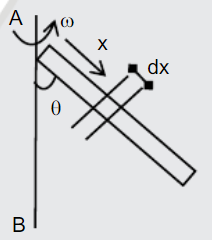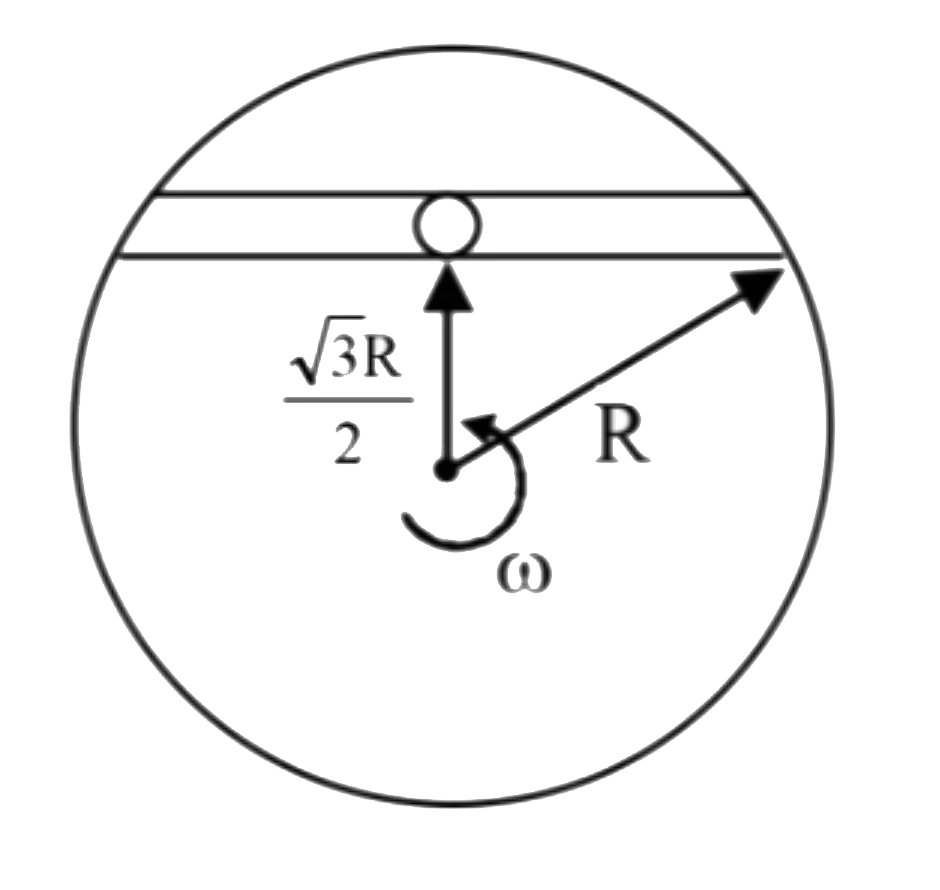A copper ball of mass m=1kg with a radius of r=10cm rotates with angular velocity ω=2rad/s about an axis passing through its centre. The work should be performed to increase the angular velocity of rotation of the ball two fold is.
To solve the problem, we need to calculate the work done to increase the angular velocity of a copper ball from an initial angular velocity to a final angular velocity that is double the initial value. We will follow these steps:
Step 1: Calculate the Moment of Inertia (I) of the Copper Ball
The moment of inertia I for a solid sphere is given by the formula:
I=25mr2
where m=1kg and r=0.1m (since 10 cm = 0.1 m).
Substituting the values:
I=25×1kg×(0.1m)2=25×1×0.01=2500=0.004kg m2
Step 2: Calculate the Initial Kinetic Energy (KE_initial)
The kinetic energy for rotational motion is given by:
KE=12Iω2
where ω=2rad/s.
Substituting the values:
KEinitial=12×0.004kg m2×(2rad/s)2=12×0.004×4=0.008J
Step 3: Calculate the Final Kinetic Energy (KE_final)
The final angular velocity ωfinal is double the initial angular velocity:
ωfinal=2×ωinitial=2×2=4rad/s
Now calculate the final kinetic energy:
KEfinal=12Iω2final
Substituting the values:
KEfinal=12×0.004kg m2×(4rad/s)2=12×0.004×16=0.032J
Step 4: Calculate the Work Done (W)
The work done is equal to the change in kinetic energy:
W=KEfinal−KEinitial
Substituting the values:
W=0.032J−0.008J=0.024J
Final Answer
The work that should be performed to increase the angular velocity of rotation of the ball two-fold is:
0.024J
The moment of inertia I for a solid sphere is given by the formula:
I=25mr2
where m=1kg and r=0.1m (since 10 cm = 0.1 m).
I=25×1kg×(0.1m)2=25×1×0.01=2500=0.004kg m2
The kinetic energy for rotational motion is given by:
KE=12Iω2
where ω=2rad/s.
KEinitial=12×0.004kg m2×(2rad/s)2=12×0.004×4=0.008J
The final angular velocity ωfinal is double the initial angular velocity:
ωfinal=2×ωinitial=2×2=4rad/s
KEfinal=12Iω2final
Substituting the values:
KEfinal=12×0.004kg m2×(4rad/s)2=12×0.004×16=0.032J
The work done is equal to the change in kinetic energy:
W=KEfinal−KEinitial
Substituting the values:
W=0.032J−0.008J=0.024J
The work that should be performed to increase the angular velocity of rotation of the ball two-fold is:
0.024J
Topper's Solved these Questions
- RIGID BODY DYNAMICS 2Book:CENGAGE PHYSICS ENGLISHChapter:RIGID BODY DYNAMICS 2Exercise:Exercise 3.2
Explore 13 Videos
- RIGID BODY DYNAMICS 2Book:CENGAGE PHYSICS ENGLISHChapter:RIGID BODY DYNAMICS 2Exercise:Exercise 3.3
Explore 21 Videos
- RIGID BODY DYNAMICS 2Book:CENGAGE PHYSICS ENGLISHChapter:RIGID BODY DYNAMICS 2Exercise:Solved Examples
Explore 12 Videos
- RIGID BODY DYNAMICS 1Book:CENGAGE PHYSICS ENGLISHChapter:RIGID BODY DYNAMICS 1Exercise:Integer
Explore 11 Videos
- SOUND WAVES AND DOPPLER EFFECTBook:CENGAGE PHYSICS ENGLISHChapter:SOUND WAVES AND DOPPLER EFFECTExercise:Integer
Explore 16 Videos
Similar Questions
A rod is rotating with angular velocity ω about axis AB. Find cosθ.

View SolutionA ring of mass m and radius r rotates about an axis passing through its centre and perpendicular to its plane with angular velocity ω. Its kinetic energy is
View SolutionA horizontal disk is rotating with angular velocity ω about a vertical axis passing through its centre. A ball is placed at the centre of groove and pushed slightly. The velocity of the ball when it comes out of the groove -

View SolutionA disc of mass m, radius r and carrying charge q, is rotating with angular speed ω about an axis passing through its centre and perpendicular to its plane. Calculate its magnetic moment
View SolutionA disc of mass m, radius r and carrying charge q, is rotating with angular speed ω about an axis passing through its centre and perpendicular to its plane. Calculate its magnetic moment
View SolutionA uniform rod of mass m and length l rotates in a horizontal plane with an angular velocity ω about a vertical axis passing through one end. The tension in the rod at a distance x from the axis is
View SolutionA flywheel having a radius of gyration of 2m and mass 10 kg rotates at an angular speed of 5rads−1 about an axis perpendicular to it through its centre. The kinetic energy of rotation is
View SolutionTwo balls of masses m and 2m are attached to the ends of a light rod of length L. The rod rotates with an angular speed ω about an axis passing through the center of mass of system and perpendicular to the plane. Find the angular momentum of the system about the axis of rotation.
View SolutionA solid sphere of radius r and mass m rotates about an axis passing through its centre with angular velocity ω. Its K.E. Is
View SolutionA ring of mass m and radius R is being rotated about its axis with angular velocity o. If o increases then tension in ring
View Solution